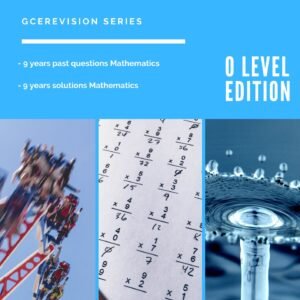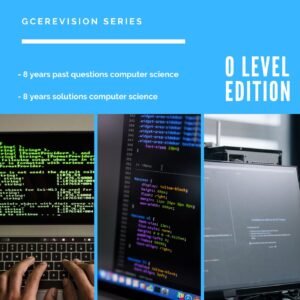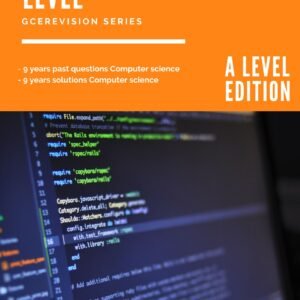775 FURTHER MATHEMATICS
- Introduction
Further Mathematics is designed to prepare students for further studies and applications that are higher than those provided by Advanced Level Mathematics. It examines concepts in pre-calculus, algebraic structures, statistics, mechanics and applications. The style of the examination will continue to change and take into account modern developments.
- AIMS
In addition to the aims given in the general introduction for Advanced Level Mathematics (765/770), the aim of the 775 syllabus is to enable schools to provide an option for:
- candidates with higher aptitude, ability, and inclinations to study more Mathematics at this level.
- candidates who intend to proceed to areas of higher education requiring a deeper understanding and broader knowledge of Mathematics.
- candidates who wish to enter job market or into vocational training where a higher demand for mathematics is needed.
- GENERAL OBJECTIVES
The 775 syllabus should:
- develop candidates’ deeper understanding of mathematical reasoning and processes.
- develop candidates’ ability to relate different areas of Mathematics to one another.
- provide candidates with a foundation for further study of Mathematics and give them adequate mathematical basis for related disciplines and work at higher level.
- enable candidates to appreciate the significance of Mathematics to the society in general.
- ASSESSMENT OBJECTIVES
The objective of the assessment is to test the ability of the candidates to:
- demonstrate a knowledge and understanding of the principles of the core mathematics topics, mechanics, and simple probability distributions (AO1).
- apply their knowledge of Mathematics to solve simple problems in mechanics and probability (AO2).
- apply their knowledge of Mathematics to solve problems for which an immediate method of solution is not available and may involve a knowledge of more than one topic of the syllabus (AO2).
- select, organised, and use techniques of Pure and Applied Mathematics, as specified in the syllabus, to analyse problems and issues (AO3).
- interpret problems and write clear and accurate mathematical solutions (AO4).
- evaluate mathematical statements and theories and justify them through the presentation of clear and systematic proofs (or dis-proofs) (AO5).
- STRUCTURE OF THE EXAMINATION
5.1 Weighting of the Assessment objectives
| Assessment Objectives | Weighting of Assessment Objectives |
| 1. Knowledge and understanding) (AO1). | 10 % |
| 2. Application of knowledge (AO2). | 20 % |
| 3. Analysis (AO3). | 30 % |
| 4. Synthesis (AO4). | 30 % |
| 5. Evaluation (AO5). | 10 % |
5.2 Scheme of Assessment
| Paper | Mode of Assessment | Weighting | Number of Questions | Duration |
| 1 | Written paper with 50 objective MCQs | 20 % | 50 | 1 hours |
| 2 | Essay questions | 50 % | 10 | 3 hours |
| 3 | Essay questions | 30 % | 8 | 2 hours |
5.3 Table of Specification (TOS)
| Paper Number | Category | Number of questions | Marks | Level of difficulty |
| 1 | Knowledge and Comprehension | 5 | 5 | * i.e. single star or one star |
| Application | 10 | 10 | * | |
| Analysis | 15 | 15 | Eight (8) of which shall be Single star and 7 double stars (**) | |
| Synthesis | 15 | 15 | Seven (7) of which shall be Single star and ** | |
| Evaluation | 5 | 5 | *** | |
| Total | 50 | 50 | ||
|
2 |
Knowledge | 1 | 10 | * |
| Comprehension | ||||
| Application | 4 | 40 | two questions (20 marks) of single star (*) strength the rest ** | |
| Analysis | 4
|
40 | three single * questions (30 marks) and one ** questions | |
| Synthesis | ||||
| Evaluation | 1 | 10 | *** | |
| 10 | 100 | |||
|
3 |
Knowledge | 1 | 10 | * |
| Comprehension | ||||
| Application | 3 | 40 | single star (*) 20 marks strength the rest ** | |
| Analysis | 3 | 40 | single * 30 marks and 10 marks from ** questions or sections of the questions | |
| Synthesis | ||||
| Evaluation | 1 | 10 | *** |
The examination will consist of three written papers. Questions will be set in S I units.
Paper one. A multiple-choice paper of one and a half hours carrying one-fifth of the maximum mark. Questions will be based on the entire syllabus; including topics of papers 2 and 3.
Electronic calculators may not be used.
Paper two. A paper of three hours carrying half of the maximum mark will consist of 10 questions of varying length and strength for candidates to attempt all.
Paper three. A paper of two and a half hours carrying three tenths of the maximum mark and will consist of eight questions of varying length for candidates to attempt all. Questions will not carry equal.
Remarks: For papers two and three, candidates will be expected to have non-programmable electronic calculators and GCE standard booklets of mathematical formulae including statistical formulae and tables.
In papers two and three, candidates are advised to show all the steps in their work, giving their answer at each stage. The value of the acceleration of free fall, g, quoted in paper three will be
except otherwise stated in the question paper.








brian
December 23, 2022
This page does not give the course outline for the subject